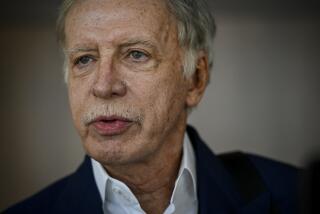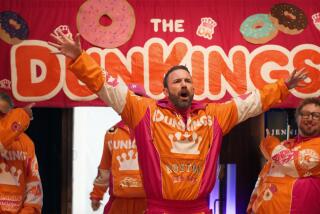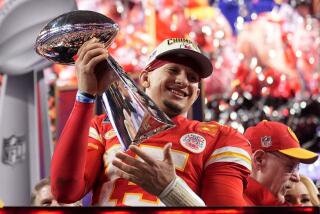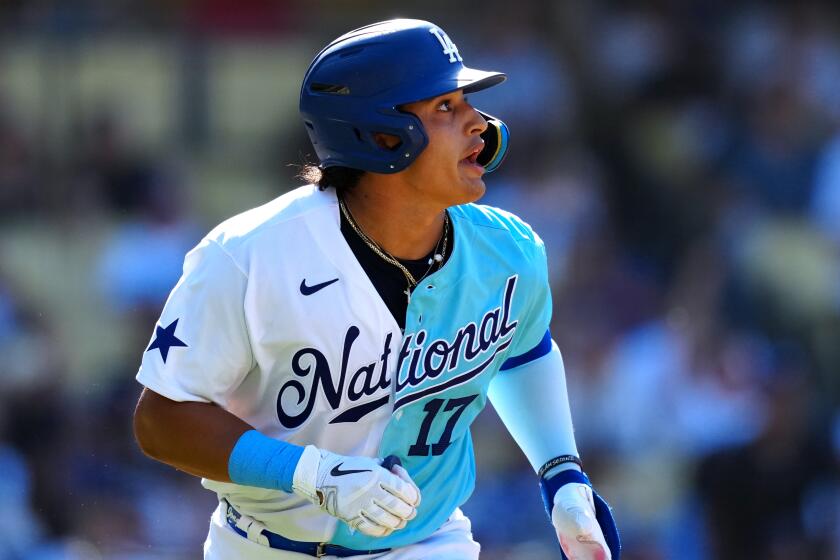Super Bowl has come a long and lucrative way from its humble beginning
A sellout crowd of 72,000, with many paying more than $3,000 a ticket, will file into the Superdome in New Orleans for the Super Bowl. Another 160 million people, spread throughout 200 countries, are expected to watch the game on television, driving commercial rates as high as $4 million for a 30-second spot.
And if you don’t like the game or the commercials, there’s always the halftime show featuring Beyonce, a 16-time Grammy Award winner who may be the biggest star scheduled to take the field on Super Bowl Sunday.
Clearly, the NFL’s annual championship game has become an event in which the pomp has outgrown the circumstances.
But it wasn’t always that way. There were 33,000 empty seats in the first Super Bowl, at the Coliseum, where the halftime show featured two college bands and the Arcadia High drill team.
“It wasn’t a big thing because no one knew what the Super Bowl was,” said Toni Tuck, who marched with the Arcadia drill team that day. “It was just another gig.”
That went for the players too.
“Originally, it was just another ballgame,” said Jerry Kramer, then an All-Pro guard with the Green Bay Packers, winners of the first two Super Bowls.
Truth be told, it wasn’t even called the Super Bowl then. For the first two years the game went by the rather clunky “AFL-NFL Championship Game.” But when Lamar Hunt, owner of the AFL’s Kansas City Chiefs, off-handedly referred to it as the Super Bowl, borrowing the name from a popular kids’ toy called the Super Ball, the name stuck, which is why a black rubber Super Ball remains on display at the Pro Football Hall of Fame.
Hunt, by the way, also came up with the idea of assigning each Super Bowl a Roman numeral, figures used outside of Rome primarily to enumerate centuries and world wars.
Yet, despite all that, Kramer said even the NFL was surprised to see the game bloom into the cultural touchstone and de facto national holiday it has become.
When Kramer was selected to the Super Bowl’s Silver Anniversary team in 1990, the league presented him with a commemorative book. And in it Kramer said the authors quoted former commissioner Pete Rozelle, who helped give birth to the Super Bowl, turning to a friend at Super Bowl XI and asking, “Did you ever believe it would be this big?”
“Now if Pete didn’t understand where it was going and what the potential was, it really isn’t much of a surprise that no one else did,” Kramer said. “Certainly I didn’t.”
Nor were Kramer and Rozelle alone. Two years after retiring as a player in 1968, Kramer had thoughts of investing in an NFL team, so he began ringing up old friends for advice.
“I went around to five or six NFL general managers and I’m asking questions about the future of the game, where’s it going, how about television money, what’s it look like?” Kramer said. “I got comments like ‘peaking,’ ‘saturation,’ ‘overexposure,’ ‘leveling off.’
“Our guy in Green Bay said, ‘Gee, Jerry I don’t know. Tickets have gone from $2.60 to $5. I don’t know how much more these people can pay.’ ”
The answer? A lot more. The cheapest seat at a Packers game cost $72 last season, when the team’s waiting list for season tickets topped 100,000. And while the top price for a ticket to the first Super Bowl was $12, face value for tickets to this year’s game ranged from $600 to $1,200, and Ticketmaster on Tuesday was asking more than $13,210 for its most expensive seats.
Rather than causing interest in the game to wane, the exorbitant prices the NFL charges for everything related to the Super Bowl, from tickets to TV time, has actually fanned the game’s growth. Or at least that’s the theory pushed by Fred “the Hammer” Williamson, a flamboyant defensive back on the Kansas City Chiefs team that lost to Kramer’s Packers in Super Bowl I.
“Money has changed the game,” said Williamson, who retired from the NFL a year after his Super Bowl appearance to become an actor. “It’s all a hype to make more money, to get more television commercials. It’s all predicated on money. So it eventually had to grow to do that.”
And so did the halftime show. What started out with two bands, a high school drill team and two guys wearing jet packs eventually became a worldwide showcase for the likes of Madonna, U2, Paul McCartney, the Rolling Stones, Bruce Springsteen, The Who and Janet Jackson’s infamously malfunctioning wardrobe.
“The Super Bowl then was no big deal,” said Tuck, 62, who remembers she and her Arcadia High classmates marching out of step to the wrong music in Super Bowl I. “We were high school girls. What did we know?”
She lives in Pasadena, not far from where Michael Jackson performed during the intermission of Super Bowl XXVII at the Rose Bowl.
“It’s amazing,” she said of the changes.
As for what was at stake in the actual game that first Super Bowl Sunday, for Williamson’s Chiefs it was a chance to prove the AFL was ready to be taken seriously.
“That’s mainly what was in our mind, not so much that ‘this is going to be a phenomenon,’ ” Williamson said. “We were the new kids on the block. We were out to show them that we could kick their ass.”
The Packers, meanwhile, were out to prevent that, with the league putting heavy pressure on legendary Green Bay coach Vince Lombardi to protect the honor and prestige of the more established NFL.
In response, Kramer said Lombardi moved the team’s training camp two hours north, to Santa Barbara, and increased the fines for breaking curfew to 10 times what they had been during the regular season.
Still, as kickoff for the first Super Bowl in history approached, Lombardi was such a nervous wreck that when CBS’ Frank Gifford put his arm around the coach during a pregame interview, he said, “Coach Lombardi was shaking like a leaf.”
Five years later, the seven-pound, 22-inch sterling silver award presented to the Super Bowl champions was renamed the Vince Lombardi Trophy.
Twitter: @kbaxter11
More to Read
Go beyond the scoreboard
Get the latest on L.A.'s teams in the daily Sports Report newsletter.
You may occasionally receive promotional content from the Los Angeles Times.











